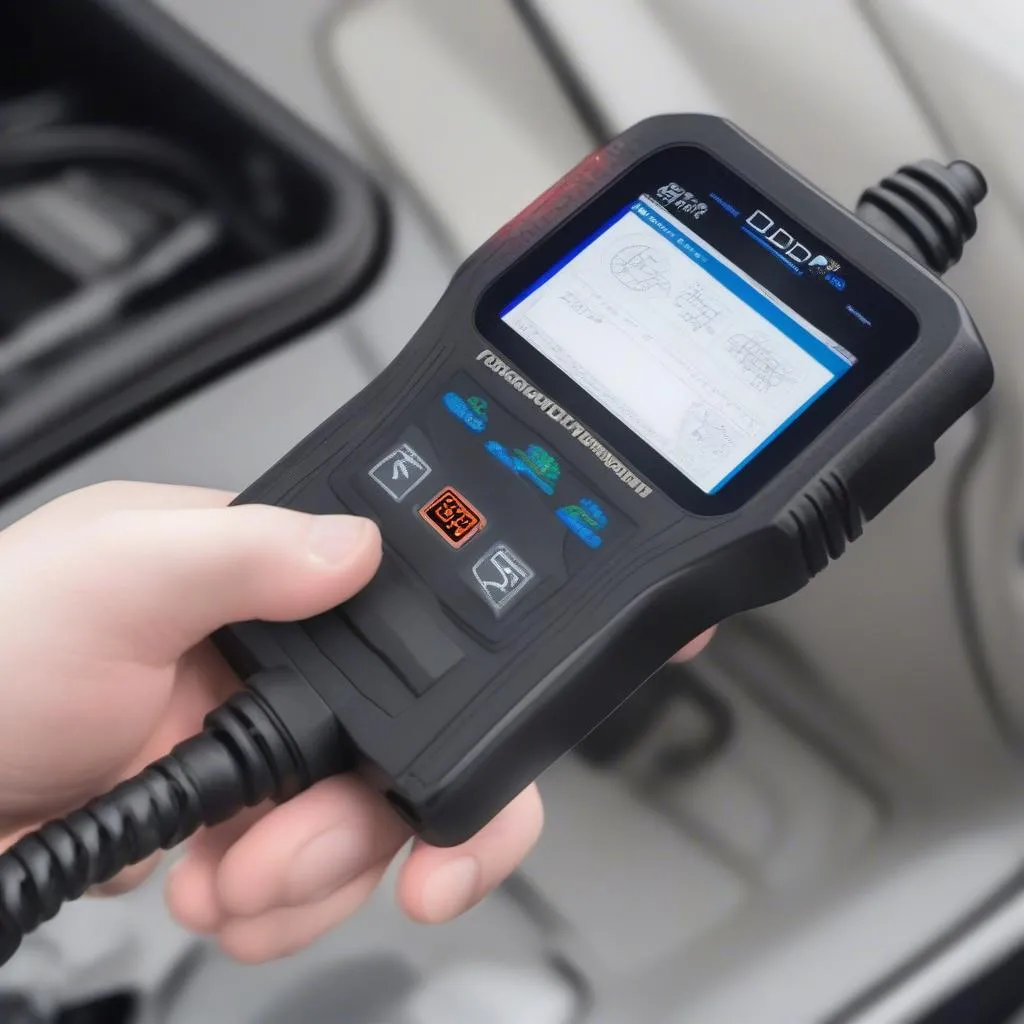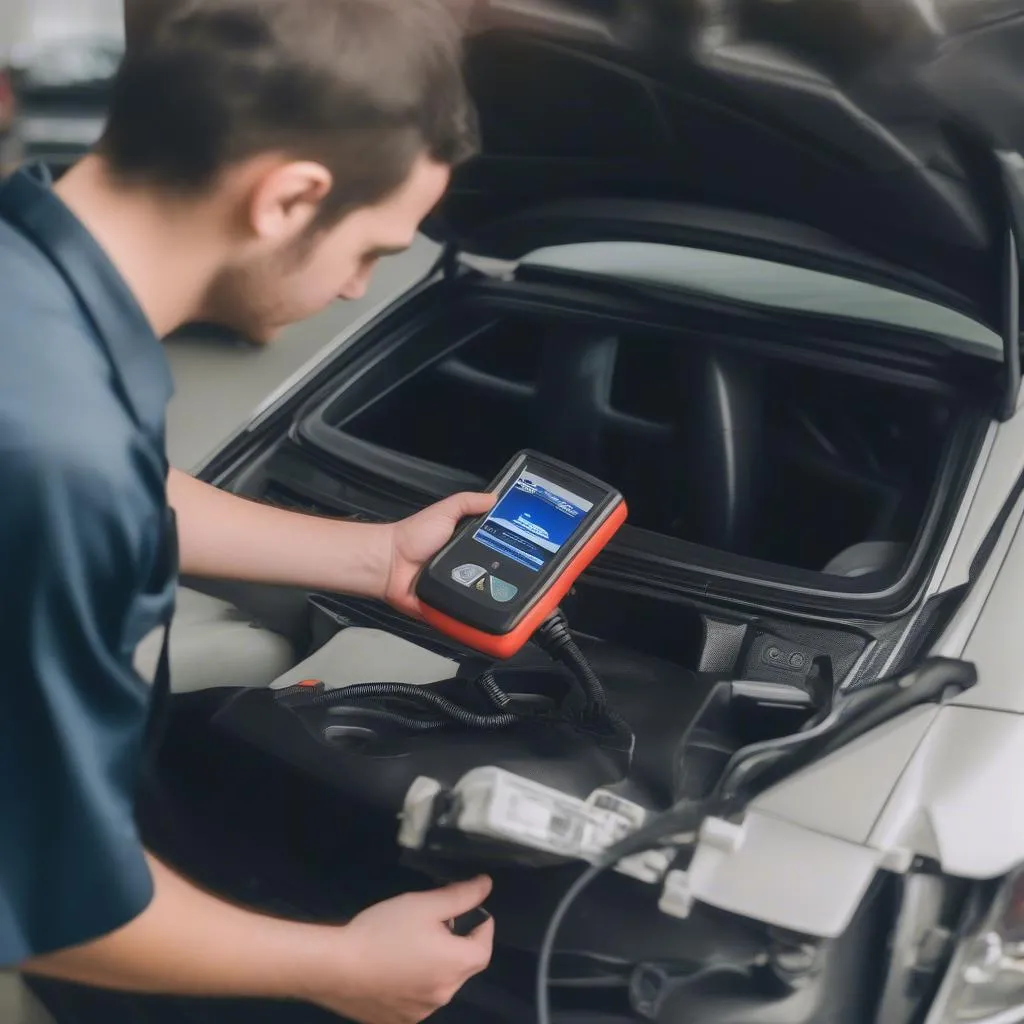Have you ever wondered what’s going on under the hood of your car? Maybe your check engine light is on, and you’re not sure what it means. Or perhaps you’re a car enthusiast who wants to monitor your vehicle’s performance in real-time. An OBD II scanner can be your best friend in these situations.
What is an OBD II Scanner?
An OBD II scanner, also known as an OBD2 scanner, is a diagnostic tool used to communicate with your vehicle’s onboard computer system. This system, known as the On-Board Diagnostic II system, is present in most cars manufactured in the United States after 1996 and in Europe after 2001.
Why is an OBD II Scanner Important?
Think of an OBD II scanner as a translator between you and your car. It allows you to access and understand the data stored in your car’s computer, providing valuable insights into its health and performance.
OBD II Scanner: A Mechanic’s Best Friend
For mechanics, an OBD II scanner is an indispensable tool. It helps them quickly diagnose problems, pinpoint specific faults, and repair issues more efficiently. Imagine you are a mechanic in New York City, working on a European car, and your client tells you about a weird noise. You connect the OBD II scanner, read the codes, and immediately know that the issue is a faulty sensor.
OBD II Scanner: A DIY Enthusiast’s Tool
Even if you’re not a professional mechanic, an OBD II scanner can be extremely helpful. It can help you understand why your check engine light is on, monitor your fuel economy, and even clear trouble codes to reset the light. This can save you time and money in the long run.
What can an OBD II Scanner Do?
OBD II scanners are capable of performing various functions, including:
- Reading and clearing trouble codes: The check engine light often illuminates when a problem arises within your vehicle’s system. An OBD II scanner can read and interpret these trouble codes, providing valuable insights into the specific problem.
- Monitoring vehicle performance: OBD II scanners can display real-time data about your vehicle’s performance, such as engine speed, fuel consumption, and vehicle speed.
- Retrieving freeze frame data: Freeze frame data captures the vehicle’s operating conditions at the moment a trouble code is stored. This data can be crucial for identifying the root cause of a problem.
- Performing live data monitoring: Live data monitoring lets you observe various sensor readings in real-time. This can be helpful for troubleshooting issues, monitoring performance, and even verifying repairs.
- Performing bi-directional tests: Some advanced OBD II scanners can perform bi-directional tests, allowing you to control certain vehicle systems and components. This can be helpful for diagnosing and resolving issues.
What are the different types of OBD II Scanners?
There are several types of OBD II scanners available, each with its own set of features and capabilities.
Basic OBD II Scanners
These are the most affordable and commonly used scanners. They are simple to use and can read and clear trouble codes. They are perfect for checking your check engine light and resetting it if needed.
Advanced OBD II Scanners
These scanners offer a wider range of features, such as live data monitoring, bi-directional testing, and more. They are often used by professionals, but they can also be helpful for serious DIY enthusiasts.
Wireless OBD II Scanners
These scanners connect to your smartphone or tablet wirelessly, allowing you to access and monitor your vehicle’s data on the go. They offer convenience and can be helpful for tracking your car’s performance and receiving real-time alerts.
FAQs about OBD II Scanners
What are the Benefits of Using an OBD II Scanner?
Benefits of using an OBD II scanner:
- Early diagnosis: Identify potential issues before they become serious problems.
- Save money: Avoid unnecessary repairs by pinpointing the exact cause of a problem.
- Increased control over your vehicle: Monitor performance and make informed decisions about maintenance and repairs.
- Greater peace of mind: Know your vehicle’s health and be prepared for potential problems.
Can I use an OBD II scanner on any car?
Most cars manufactured after 1996 in the United States and 2001 in Europe have an OBD II port. You can use an OBD II scanner on any vehicle that has this port. However, the functionality and features of the scanner may vary depending on the vehicle’s year, make, and model.
Are OBD II Scanners Legal?
OBD II scanners are completely legal to use in most countries. They are designed for diagnostic purposes and do not interfere with your vehicle’s operation. However, it’s always best to check your local regulations to ensure compliance.
Where can I find an OBD II scanner?
OBD II scanners are widely available online and at most auto parts stores. You can find a range of models to suit your needs and budget.
How to Use an OBD II Scanner
Using an OBD II scanner is relatively simple. Here’s a quick guide:
- Locate the OBD II port: This port is usually located under the dashboard, near the steering column.
- Connect the scanner to the port: Plug the scanner’s connector into the OBD II port.
- Turn on the ignition: Switch on your car’s ignition without starting the engine.
- Follow the scanner’s instructions: Each scanner has its own interface and instructions. Follow the on-screen prompts to perform the desired diagnostic functions.
Key Takeaways
An OBD II scanner is a powerful tool that can be a valuable asset for both mechanics and car owners. By understanding its capabilities, you can gain valuable insights into your vehicle’s health, diagnose problems quickly, and save money on repairs.
 OBD II Scanner for Cars
OBD II Scanner for Cars
 OBD II Scanner Dashboard
OBD II Scanner Dashboard
If you’re looking for further guidance or have any specific questions, feel free to reach out to us through our website or contact us at +84767531508. We have a team of experts available 24/7 to assist you.
Disclaimer: The information provided in this article is for informational purposes only and should not be considered professional advice. Please consult with a qualified mechanic for any car repair needs.